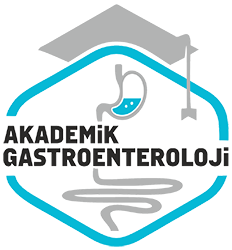Aralik 2023
MELD skoru yüksek canlı vericili karaciğer nakli alıcılarında perioperatif bulgular ve postoperatif komplikasyonlar
Perioperative findings and postoperative complications in living donor liver transplantation recipients with high MELD scores
- Ana Sayfa
- Sayılar
- Aralik 2023
- MELD skoru yüksek canlı vericili karaciğer nakli alıcılarında perioperatif bulgular ve postoperatif komplikasyonlar...
3Department of Internal Medicine, Biruni University Hospital, Istanbul, Turkey
Özet
Giriş ve Amaç: Yüksek MELD skorunun perioperatif alici/greft iskemi süreleri ve postoperatif komplikasyonlar üzerine etkisini araştırmayı amaçladık. Gereç ve Yöntem: çalışmaya, son dönem karaciger sirozu nedeniyle canli vericiden karaciger nakli yapılan 172 hasta dahil edildi. Hastalar MELD skorlari 20’nin altında ve üstünde olanlara göre gruplandirilarak incelendi. Anhepatik faz, soguk iskemi süresi, operasyon süresi, kan ürünü transfüzyonu, toplam hastane ve yoğun bakım ünitesinde kalis süresi, safra komplikasyonlari, hepatik ven trombozu, portal ven trombozu, postoperatif kanama, sepsis ve primer greft disfonksiyonu istatistiksel olarak analiz edildi. Bulgular: MELD >20 olan hastalarda soguk iskemi süresi (p = 0,046) istatistiksel olarak daha uzundu. Perioperatif kan transfüzyonuna ilişkin istatistiksel olarak anlamli P değerine çok yakin bir sonuç elde edildi. Sonuç: MELD arttikça soguk iskemi süresi de artmaktadır. Hasta hazirlanirken ve tedavi plani yapilirken MELD skoru dikkate alinmalidir.
Abstract
Background and Aims: We aimed to investigate the effect of the high MELD score on perioperative recipient/graft ischemia times and postoperative complications. Materials and Method: One hundred and seventy-two patients who underwent living-donor liver transplantation for end stage liver cirrhosis were included in the study. The patients were grouped and examined according to their MELD score under and above 20. Anhepatic phase, cold ischemia time, operation time, blood product transfusion, total hospital and intensive care unit staying time rates, biliary complications, hepatic vein thrombosis, portal vein thrombosis, postoperative hemorrhage, sepsis, and primary graft dysfunction were analyzed statistically. Results: Cold ischemia time (p = 0.046) was statistically longer in patients with MELD >20. A result very close to the statistically significant P value regarding perioperative blood transfusion was obtained. Conclusion: Cold ischemia time increases with increasing MELD. The MELD score must be taken into consideration when preparing the patient and making a treatment plan.



